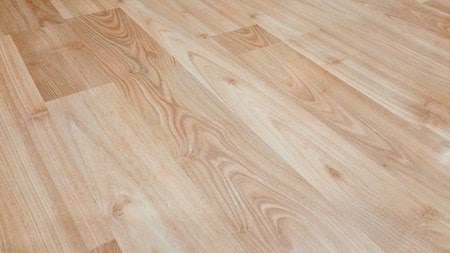An underlay is the layer of floor between the subfloor and top floor covering. It is a thin material that allows for the easy installation of floor materials like laminate, hardwood, vinyl, tiles, and carpet. It also insulates sound by reducing the noise footsteps make and ensures that top floor materials last longer by preventing moisture damage.
When is installing an underlay necessary?
Subfloors are usually made from plank, concrete, plywood, and oriented strand board (OSB) — a wood that is created by putting together different layers of wood flakes. Underlays are necessary if required for a particular reason such as installing laminated flooring and carpeting or for covering a subfloor that is in bad condition. Underlays should be 7mm to 12mm in thickness in order to insulate sound and adequately support the top floor materials.
Buildings that are newly constructed don’t necessarily require an underlay as the subfloor is new and leveled. However, an underlayment would be useful to insulate sound in multi-level homes and sectional titles.
Sometimes existing hard flooring can be used as an underlay. For instance, in the case of installing carpets in a home, the existing hardwood flooring can be used as an underlay. Vinyl flooring also works as a suitable underlayment.
Types of underlay
There are different types of underlays available. These underlays also vary depending on the type of top floor material that is being installed.
Carpet underlays
Carpet underlays include rubber, felt, rebond foam, wood, laminate, cork and SBR latex. Carpet underlays increase the durability of the carpet, insulate heat and sound, increase the carpet’s comfort and prevent moisture damage.
Laminate underlays
These include vinyl underlay, acoustic underlay (which helps to reduce hollow sounds), standard foam underlay, and combination underlay (which is like standard foam underlay, except this helps with reducing moisture damage).
Underlay is important to ensure that your laminate flooring is levelled after installation. It also increases its durability by reducing wear and tear.
Vinyl underlay
Vinyl flooring doesn’t necessarily require an underlay, particularly if the floor beneath is made from OSB or plywood. Some vinyl flooring brands sell vinyl tiles with thin underlayment attached, removing the need to add an underlay prior to installation. Added to that, thinner types of vinyl are usually incompatible with underlayment.
Hardwood underlay
Underlay for hardwood flooring includes foam, rubber, felt, and cork. Underlayment is very important when laying hardwood floors as wood can be susceptible to rot when exposed to moisture over time. An underlayment ensures that the wood is leveled and moisture resistant.
Underlayment is important when laying floors due to its sound and heat insulation, as well as moisture-resistant qualities. It also ensures that flooring materials last for longer periods of time and are levelled when installed.





